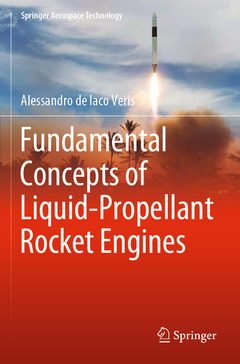Description
Fundamental Concepts of Liquid-Propellant Rocket Engines, 1st ed. 2021
Springer Aerospace Technology Series
Language: English
Subjects for Fundamental Concepts of Liquid-Propellant Rocket Engines:
Publication date: 09-2021
747 p. · 15.5x23.5 cm · Paperback
Publication date: 09-2020
747 p. · 15.5x23.5 cm · Hardback
Description
/li>Contents
/li>Biography
/li>Comment
/li>
This book is intended for students and engineers who design and develop liquid-propellant rocket engines, offering them a guide to the theory and practice alike. It first presents the fundamental concepts (the generation of thrust, the gas flow through the combustion chamber and the nozzle, the liquid propellants used, and the combustion process) and then qualitatively and quantitatively describes the principal components involved (the combustion chamber, nozzle, feed systems, control systems, valves, propellant tanks, and interconnecting elements). The book includes extensive data on existing engines, typical values for design parameters, and worked-out examples of how the concepts discussed can be applied, helping readers integrate them in their own work. Detailed bibliographical references (including books, articles, and items from the ?gray literature?) are provided at the end of each chapter, together with information on valuable resources that can be found online. Given its scope, the book will be of particular interest to undergraduate and graduate students of aerospace engineering.
Alessandro de Iaco Veris holds degrees in civil engineering and aerospace engineering, both from the University of Rome. He has also completed specialist training, including a high-level professional course on “Projet, calcul et emploi des fusées spatiales” at the Ecole Nationale Supérieure de l'Aéronautique et de l'Espace (ENSAE) and a course on “Dynamics of Controlled Structures” at Massachusetts Institute of Technology (MIT). He is a strong proponent of the application of mathematics for practical purposes and in particular for the solution of problems arising in engineering. His expertise is in the fields of mathematical models and numerical methods for aerodynamics, space flight mechanics, system studies, and mission analysis. His professional interests include numerical integration methods used to predict the motion of space vehicles and Earth satellites subject to perturbations.
These books may interest you

Rocket Propulsion Elements 165.15 €



